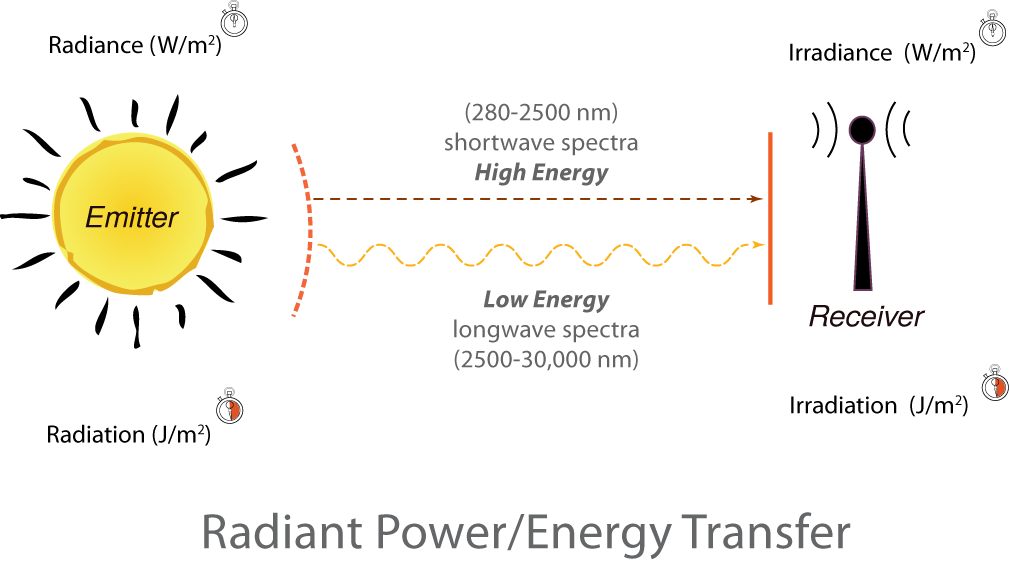First concept of solar energy:
Light is directional. Light, as a photon, is born (emitted) from a surface (a source) and then impinges upon other surfaces (a sink), where it is either absorbed, reflected, or transmitted (and refracted). We use that directionality to describe the resource. We use very specific terminology to describe the directionality of light too, coming from the subfield of radiometry (measurement of (ir)radiance).
- Irradiance (W/m\(^2\)): light that impinges upon a receiver surface, interpreted as the instantaneous rate of change in energy (called power, or Watts) per unit area. Remember that one Watt is equivalent to one Joule per second (a rate of energy exchange).
- Irradiation (J/m\(^2\)): light that impinges upon a receiver surface over a period of time, interpreted as the energy (in Joules) per unit area.
- Radiance (W/m\(^2\)): light emitted from a surface, interpreted as the instantaneous rate of change in energy (call power, or Watts) per unit area.
- Radiation (J/m\(^2\)): light emitted from a surface over a period of time, interpreted as the energy (in Joules) per unit area.
Notice that the "Ir-" instructs us that the light is incident upon a surface. For example, we measure "irradiance" on a pyranometer, because light is absorbed by the device. Also notice that my choice of "-iance" or "-iation" determines if the light is a measure of rate (as in power: energy per time) or energy (rate integrated over a span of time).

As a curious side note, you may have already heard of the terms "luminance" and "illuminance" with respect to lighting. This is a separate discipline of measurement called photometry, which only measures the intensity and density of light with respect to that unique solar energy conversion system, the human eye. We do not use photometry language when discussing the design of solar energy conversion systems, we use radiometry terms and equipment.
